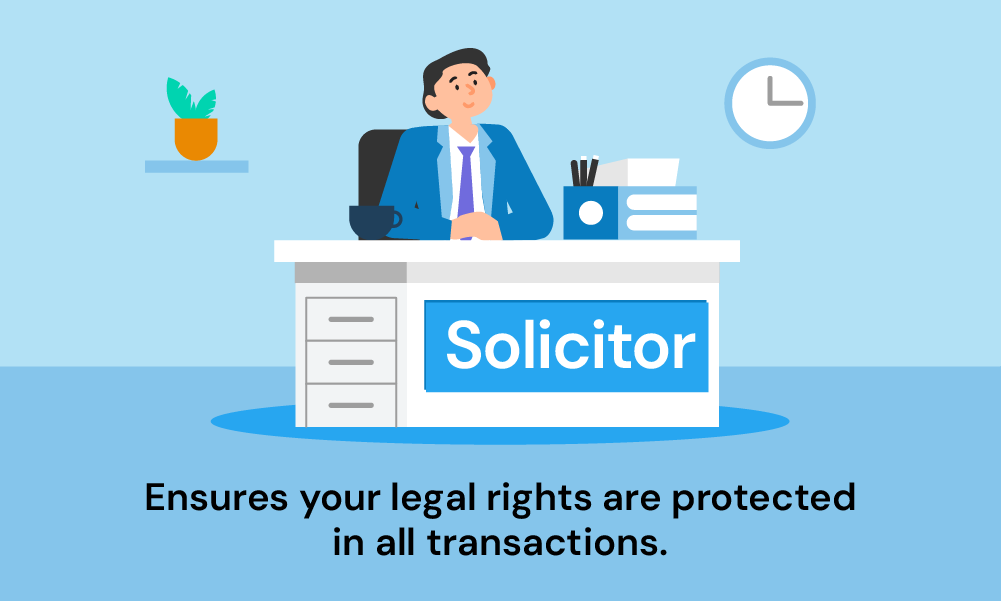Changing Your Buy To Let To Residential Mortgage

Life can take unexpected turns. Maybe you’re facing a breakup, a new job in another city, the kids needing their own space, or you’re simply looking to downsize.
In any of these cases, moving into your buy-to-let might seem like a good move.
But hold on!
There are key rules: If you switch from renting out your buy-to-let to living in it, you must get a residential mortgage from your lender.
Switching your property’s use without permission breaks your mortgage agreement. In the worst case, your lender could demand immediate repayment of the entire loan.
So how do you switch your mortgage? Let’s break it down next.
You Have Two Options To Take
Moving into your buy-to-let property isn’t as simple as just packing your bags. You need to change your mortgage first.
You’ve got two main options: a regulated buy-to-let mortgage or a residential mortgage.
Regulated Buy-to-Let Mortgage
Ideal for temporary stays
This is similar to a standard buy-to-let but allows you or family to live there for a limited time. Choose this if your buy-to-let won’t be your permanent home.
Residential Mortgage
Perfect for a permanent move
This is the standard mortgage for owner-occupied properties and often comes with better interest rates than buy-to-let options.
Why Are Buy-To-Let Mortgages Unregulated?
Buy-to-let mortgages aren’t regulated like regular mortgages because they’re seen as business deals.
The Financial Conduct Authority (FCA) protects people buying homes to live in, so they regulate those mortgages.
Furthermore, unlike first-time buyers, investors are expected to be informed about property investment or get professional advice.
In the UK, many investors choose unregulated buy-to-let mortgages. Because they’re cheaper and quicker to get approved compared to regulated ones.
What Is The Best Way to Change My Mortgage?
When it comes to changing your mortgage, the best approach is one that suits your needs. Often, the simplest route is through remortgaging or opting for a product transfer with your current lender.
Remortgaging means you switch your existing mortgage for a new one, potentially with better terms or rates. It’s a smart move when your current deal is about to end, or if the value of your property has gone up.
But, before you jump in, take a close look at your current mortgage. Understanding the terms helps you see any fees or costs tied to leaving early.
Speaking of costs, remortgaging isn’t free. You might face:
- Arrangement fees – What you pay the lender for the new mortgage.
- Valuation fees – The cost of assessing your property’s value.
- Legal fees – What you pay the solicitor to handle the paperwork.
- Early repayment charges – If you’re leaving your mortgage early, this is what you owe your lender.
Also, lenders will check your credit and if you can afford the new mortgage.
Eligibility Criteria For Changing Buy-to-Let To Residential
Who can switch from a buy-to-let to a residential mortgage? Let’s break it down:
- You must own a buy-to-let property.
- Your financial situation should support a residential mortgage.
- A good credit history helps.
- Stable income is crucial, whether employed or self-employed.
- If the property’s value has increased, that’s a plus.
- Your age might be considered, as mortgages often have an upper age limit by the end of the term.
- The property should be suitable for residential use.
Remember, each lender has different criteria. It’s always good to chat with a mortgage advisor to find the best route for your situation.
What Happens When You Switch?
The first and most obvious one is you can finally live on your property legally.
But that’s just the start.
One big perk is potentially lower interest rates. Residential mortgages often come with lower rates than buy-to-let ones.
Why? The risk to lenders is usually less when you live in the property yourself. This could also lead to lower monthly payments, making your finances a bit easier to manage.
Another advantage is the chance to release equity from your property. This means if your property’s value has increased, you could borrow against this new value.
This extra cash could be used for home improvements (making your place nicer and potentially more valuable) or to consolidate debts (replacing multiple payments with one simpler one).
So now you’re all sorted with the facts, let’s get down into business.
How To Change A Buy-To-Let To A Residential Mortgage?
Before diving into the steps, the first move is to chat with your lender about wanting to switch. If they’re on board and can offer a new mortgage product, fantastic – you’re set to go. But if it’s not that straightforward, here’s how to begin:
1. Speak With A Good Mortgage Broker
While not essential, getting a broker can make the switch smoother. They can offer:
- Insight into the best mortgage deals for you
- Guidance through the application process
- Support with understanding complex mortgage terms
Interested in finding a broker? Drop us a line, and we’ll connect you with a top-notch mortgage advisor.

2. Check If You Qualify
Make sure you meet the criteria. While each lender has their own set of rules, here’s a general list of who qualifies for residential mortgages:
- Stable income from employment or self-employment
- Good credit history
- Sufficient income to cover mortgage payments
- Deposit amount available (usually higher for self-employed)
- Age considerations (some lenders have upper age limits)
- Property eligibility (must be deemed suitable for residential use)
For residential mortgages, lenders focus more on your income and ability to make repayments, rather than potential rental income. Your broker can guide you in this process.
3. Get All The Paperwork Done
Your broker will tell you what documents you need, including:
- Identification like a passport or driver’s licence
- Proof of address from recent bills or statements
- Recent payslips or tax returns for the self-employed
- Bank statements to show your financial habits
- Details of your current buy-to-let mortgage
- Any other financial commitments
- Property details and valuation
Accuracy is key with your paperwork to avoid delays. Make sure to check for any errors before application.
4. The Application Process
Once you’ve got your documents sorted out, it’s time to apply. Your broker will help you find suitable lenders in this process.
And whether you’re staying with your current lender or moving to a new one, you’ll need:
- Your collected documents
- To pass a credit check
- A property valuation to confirm the property’s worth.
If everything checks out, you’ll get a formal mortgage offer. Review this carefully, preferably with your broker, to understand all the terms.
5. Engage With A Solicitor
You’ll need a solicitor to handle the legal side of things.
This includes the contract exchange, ensuring everything is legally sound. They’ll confirm the deal, manage the necessary legal checks, and transfer the property deeds.

6. What Happens at Completion?
Completion wraps things up. Your buy-to-let mortgage is paid off and closed.
The property changes from a buy-to-let to your own home, following the terms of your new residential mortgage.
Your solicitor makes sure everything is legal and transfers the deeds to reflect this change.
Now you start paying your new residential mortgage, officially a homeowner with all the rights and responsibilities that come with it.
Key Takeaways
- To live in your buy-to-let property, you’ll need to switch your mortgage to either a regulated buy-to-let mortgage (for short stays) or a residential mortgage (for permanent moves).
- Residential mortgages often have lower interest rates and smaller monthly payments because they’re less risky for lenders.
- Lenders will check your income, credit history, property value, and whether you meet their criteria before approving the switch.
- You’ll need to provide documents like proof of income, ID, credit history, and property details to get started.
The Bottom Line
If you’re changing your buy-to-let to a residential mortgage, it’s wise to chat with a mortgage broker.
A broker can guide you through the market, find the best deals, and simplify the whole process. They understand the ins and outs, saving you time and potentially money.
To find the right broker, just get in touch, and we’ll connect you with a reliable mortgage broker who can help you with the switch.
Get Matched With Your Dream Mortgage Advisor...

Frequently asked questions
How long does it take to switch mortgages?
Switching mortgages can take between 4 and 8 weeks, but it can vary. The speed depends on your finances, the lender, and if your property needs valuing.
Be prepared for possible delays, but planning ahead helps everything run smoothly.
When can you switch mortgages without penalty?
You can usually switch mortgages for free at the end of your current deal. This is the “renewal date” on fixed rates or the end of the introductory period on variable rates.
Some deals let you switch early without a penalty, but check the details first as it depends on your lender and mortgage type.
What happens if you get caught living in a buy-to-let property?
Living in a buy-to-let without proper permission can breach your mortgage terms. Your lender might charge you penalties, hike your interest rate, or even demand you repay everything at once.
Always follow your mortgage agreement to avoid any issues.
Which lenders support the switch from buy-to-let to residential mortgages?
Many lenders in the UK allow you to switch from a buy-to-let to a residential mortgage. But the deals and rates will vary depending on you.
Some lenders might be better for switching, offering more flexibility or better rates. Shop around or talk to a mortgage broker for personalised advice. They can find lenders suited to your situation.




